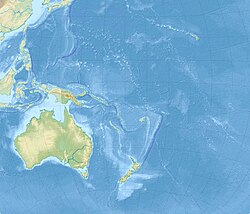Hastings
Heretaunga (Māori) | |
|---|---|
From top, left to right: Saint Matthew's Church, Hastings CBD, Toitoi Events Centre, Nga Pou o Heretaunga, Splash Planet castle, Lion sculpture at Cornwall Park | |
| Motto(s): Urbis Et Ruris Concordia (Town and Country in Harmony)[1] | |
| Coordinates: 39°38′30″S 176°50′40″E / 39.64167°S 176.84444°E | |
| Country | New Zealand |
| Island | North Island |
| Region | Hawke's Bay |
| Territorial authority | Hastings District |
| Settled by Māori | c. 14th Century |
| Settled by Europeans | c. 19th Century |
| Government | |
| • Mayor | Sandra Hazlehurst[2] |
| • Deputy Mayor • MP | Tania Kerr Catherine Wedd |
| Area | |
• District | 5,226.62 km2 (2,018.01 sq mi) |
| • Urban | 26.29 km2 (10.15 sq mi) |
| Elevation | 11 m (36 ft) |
| Population (June 2024)[3] | |
• District | 92,000 |
| • Density | 18/km2 (46/sq mi) |
| • Urban | 52,200 |
| • Urban density | 2,000/km2 (5,100/sq mi) |
| Postcode(s) | 4120, 4122 |
| Website | HastingsDC.govt.nz |
Hastings (/ˈheɪstɪŋz/; Māori: Heretaunga) is an inland city of New Zealand and is one of the two major urban areas in Hawke's Bay, on the east coast of the North Island. The population of Hastings (including Flaxmere) is 52,200 (as of June 2024),[3] with a further 14,900 people in Havelock North and 2,120 in Clive. Hastings is about 18 kilometres inland of the coastal city of Napier. These two neighbouring cities are often called "The Bay Cities" or "The Twin Cities".
The city is the administrative centre of the Hastings District. Since the merger of the surrounding and satellite settlements, Hastings has grown to become one of the largest urban areas in Hawke's Bay.
Hastings District is a food production region. The fertile Heretaunga Plains surrounding the city produce stone fruits, pome fruit, kiwifruit and vegetables, and the area is one of New Zealand's major red wine producers. Associated business include food processing, agricultural services, rural finance and freight. Hastings is the major service centre for the surrounding inland pastoral communities and tourism.
- ^ https://www.hastingsdc.govt.nz/our-council/about/coat-of-arms/ Hastings District Council, 'Coat of Arms'
- ^ "Hastings elects first woman mayor". 25 November 2017.
- ^ a b "Aotearoa Data Explorer". Statistics New Zealand. Retrieved 26 October 2024.








